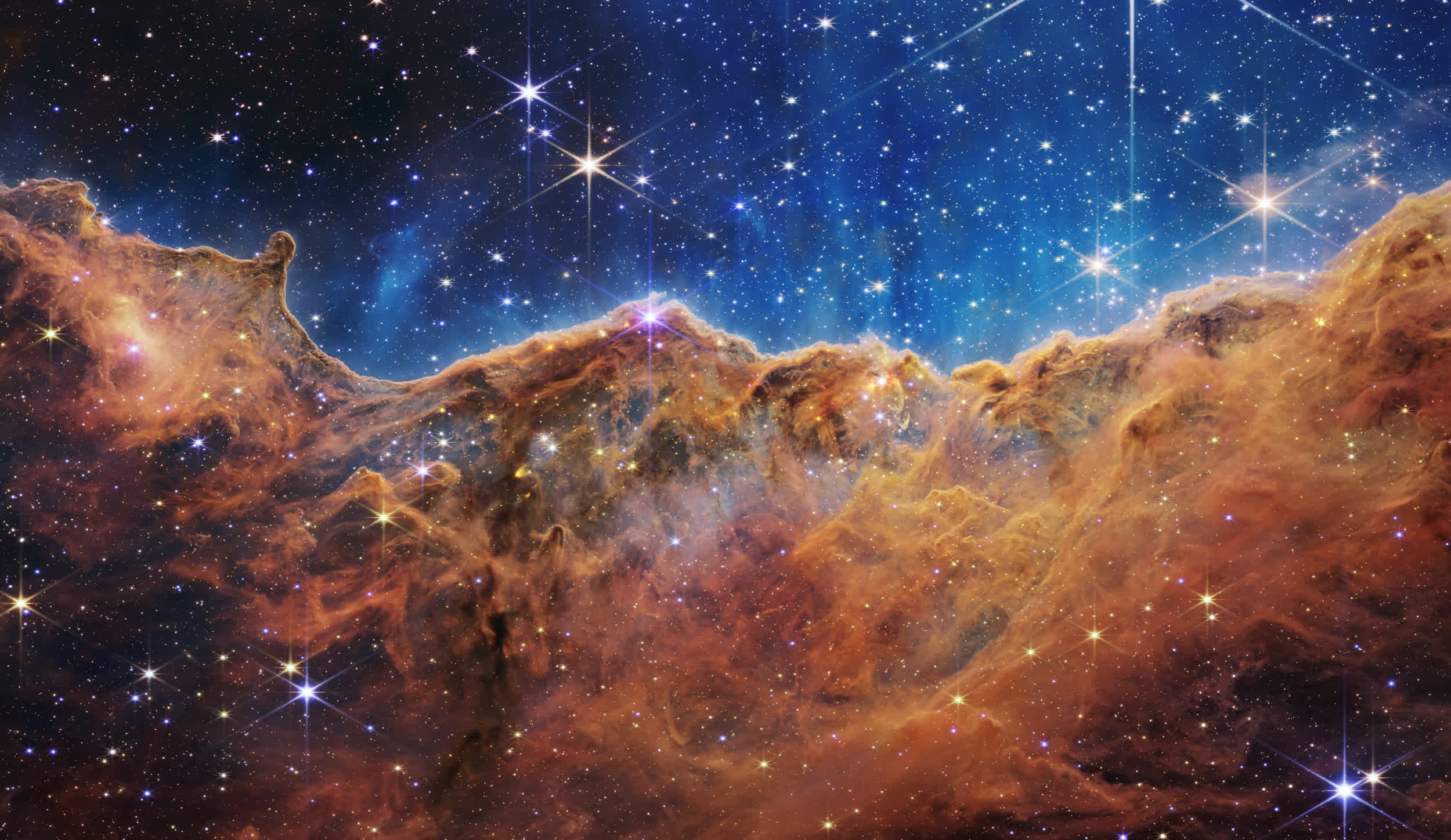Highly anticipated: NASA has published the long-awaited first images from the James Webb Space Telescope. July 12 was the scheduled drop date for the first batch of Webb images and data for a while now. At the 11th hour, however, NASA decided that President Biden should help unveil the very first image, and it certainly didn't disappoint.
Webb's First Deep Field was captured using the scope's Near-Infrared Camera (NIRCam), and is a composite made of images captured at different wavelengths across 12.5 hours.
The first image reveals the galaxy cluster SMACS 0723 as it appeared 4.6 billion years ago, and shows the effects that gravitational lensing have on distant galaxies behind it.
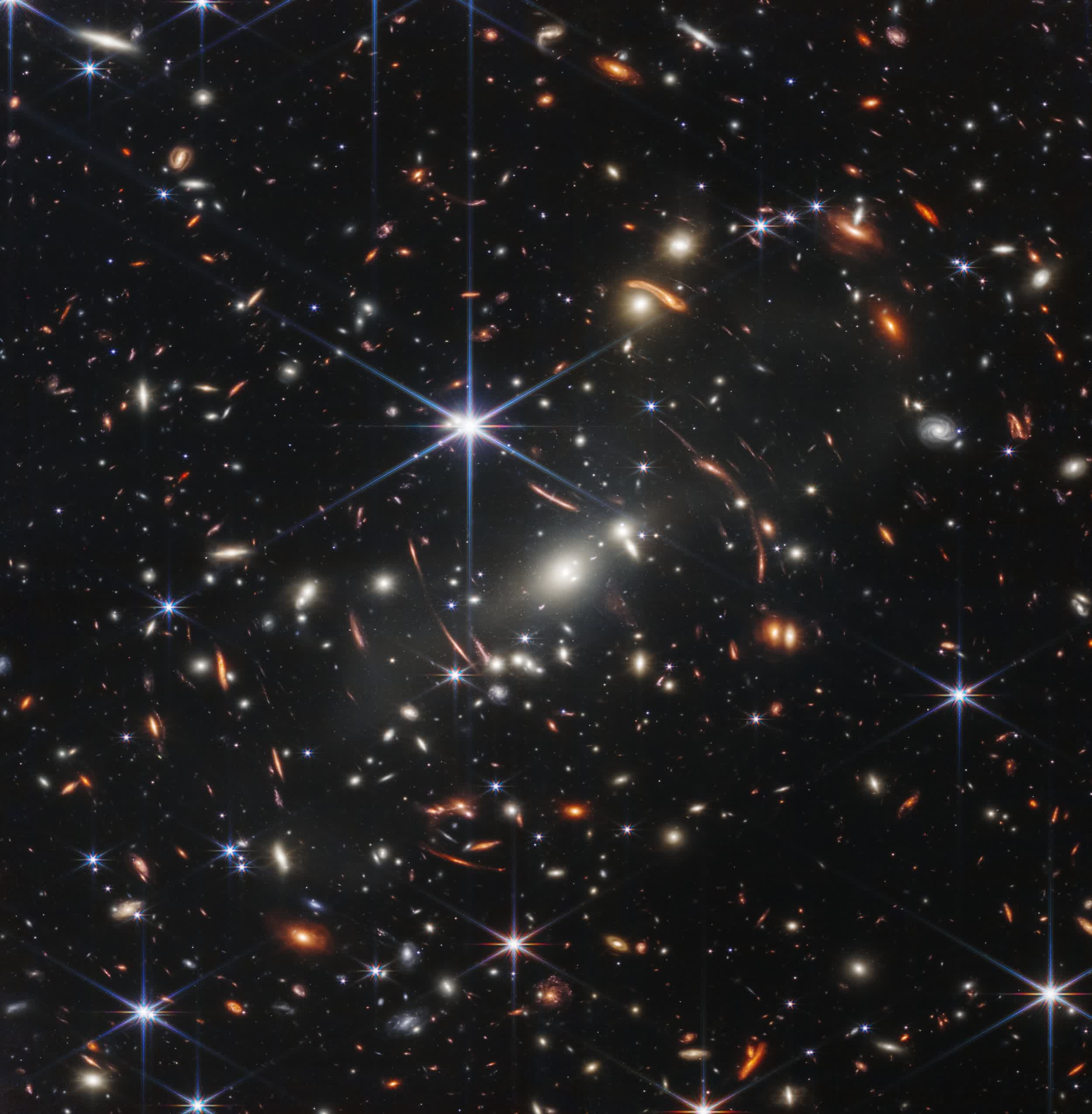
Trying to appreciate the vastness of space can truly melt the mind. Recent estimates peg our Milky Way galaxy as being around 100,000 light years in diameter (a single light year is equivalent to 5.8 trillion miles) and containing anywhere from 100 to 400 billion stars. Thousands of galaxies appear in the first Webb image, and NASA said this slice of the universe covers a patch of sky that is roughly the size of a grain of sand held at arm's length by someone on the ground.
At that scale, it's easy to feel insignificant on this pale blue dot we call Earth. With any luck, Webb will help us better understand our unique place in the universe and perhaps answer questions we haven't even though to ask yet.
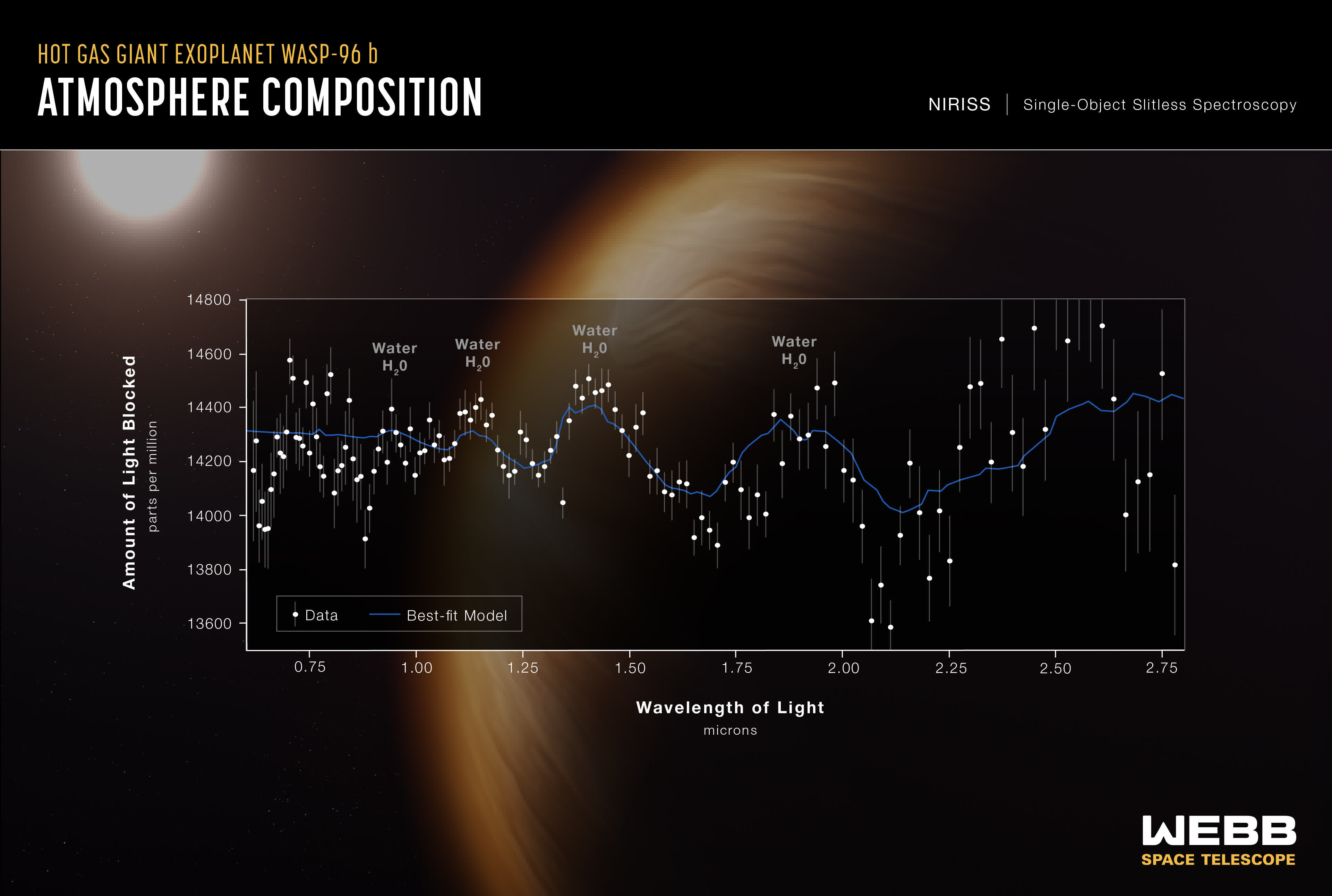
The second "image" from Webb is a transmission spectrum created from a single observation using Webb's Near-Infrared Imager and Slitless Spectrograph (NIRISS). It reveals atmospheric characteristics of a steamy gas giant exoplanet known as WASP-96 b.
More analysis of the data will be needed but preliminary conclusions point to the presence of water vapor and clouds that suppress the vapor features. NASA said the height of the peaks and other characteristics were used to calculate an atmospheric temperature of around 1,350 degrees Fahrenheit.
WASP-96 b is located about 1,150 light-years away in a constellation known as Phoenix. The planet goes around its star once roughly every 3.5 Earth days and was first discovered in 2014.
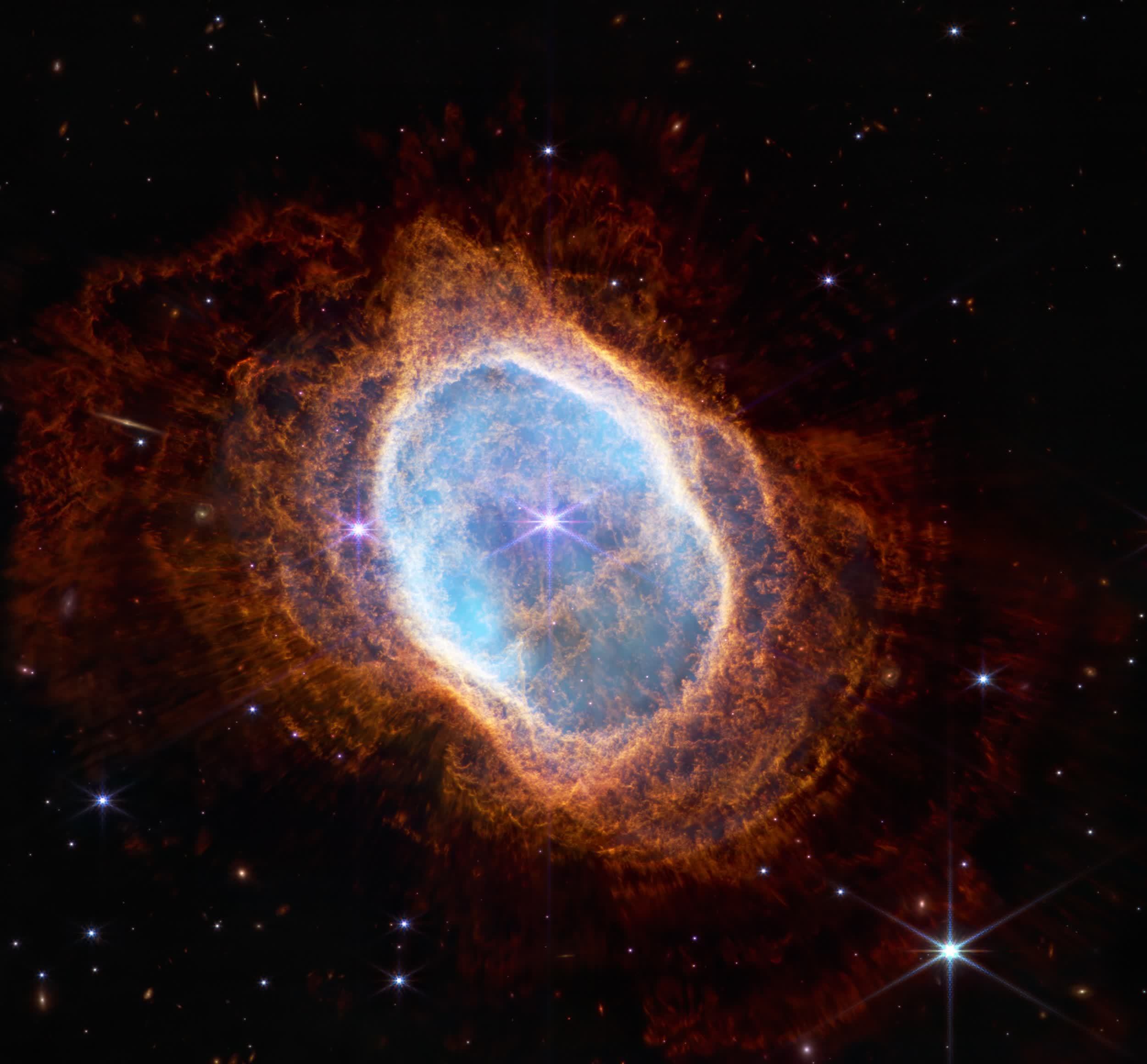
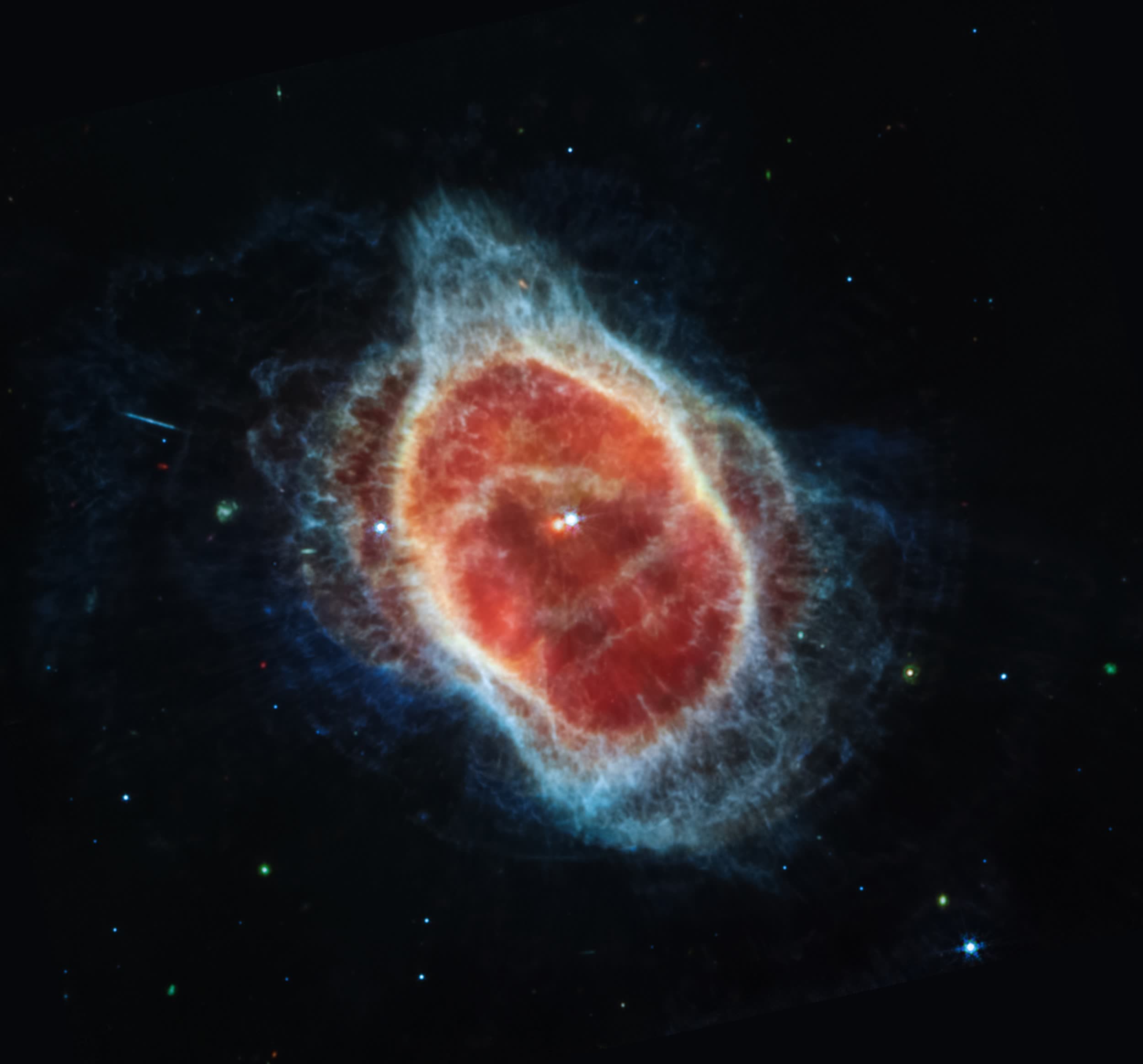
This observation of the Southern Ring Nebula shows it almost face-on. The comparison highlights the nebula in near-infrared light (top, from the NIRCam instrument) and mid-infrared light (bottom, from the MIRI instrument).
Depicted is a white dwarf star that is similar to the Sun after it has shed its outer layers and is no longer burning fuel through nuclear fusion. It is located to the lower left of the bright, central star, and is easier to view in the mid-infrared image.
You may have noticed that the resolution of the near-infrared image is much higher than that of the mid-infrared photo. This, NASA said, is due to physics. In short, NIRCam delivers higher-resolution images because the wavelengths of light it captures are shorter while MIRI wavelengths are longer. The longer the wavelength, the coarser the image.
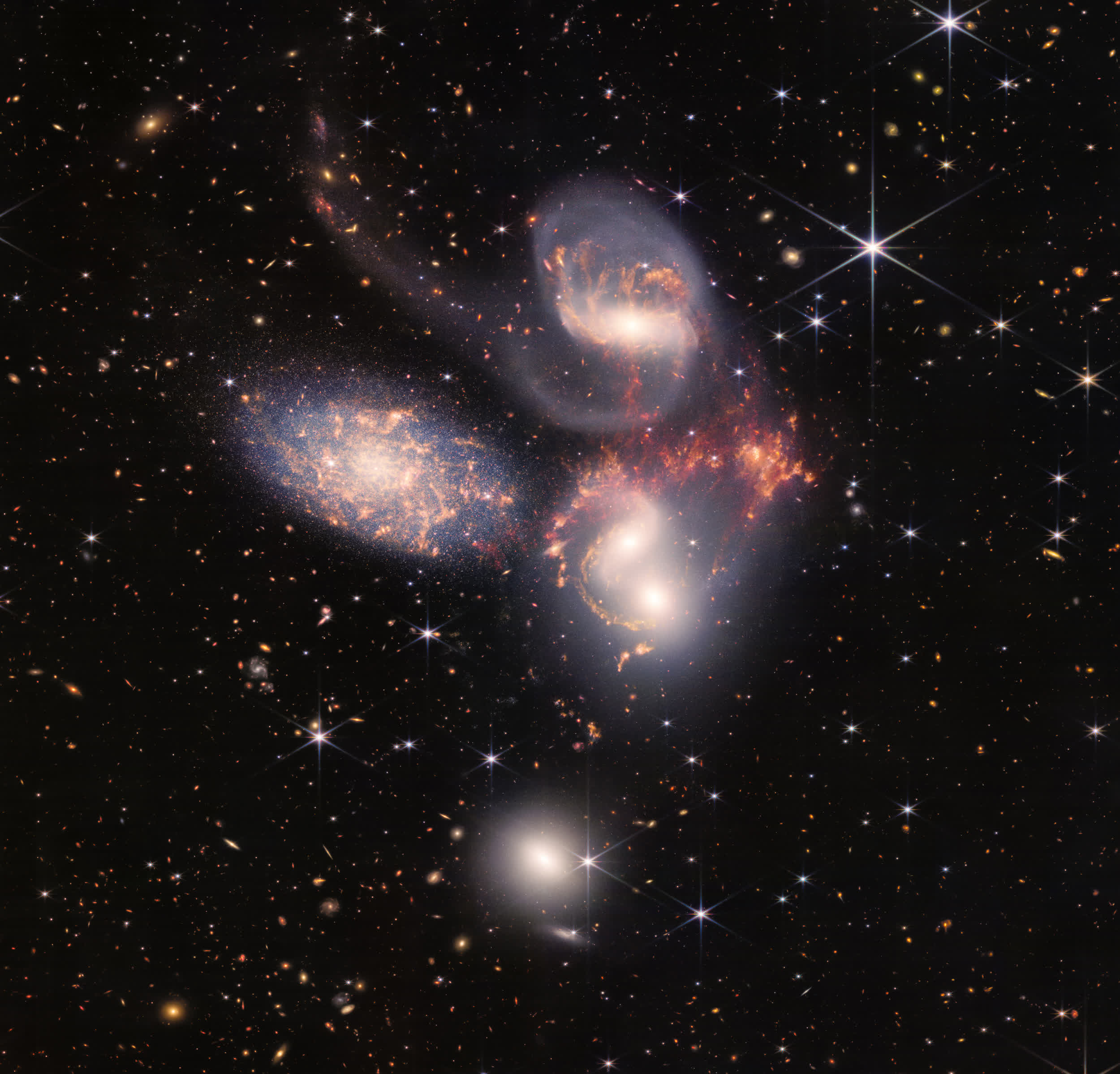
This mosaic of Stephan's Quintet was put together using nearly 1,000 separate images and is the largest image from Webb to date. It depicts a grouping of five galaxies collectively known as the Hickson Compact Group 92, and was captured using Webb's NIRCam and MIRI instruments.
The name is a bit deceptive considering only four of the five galaxies are relatively close to each other. The outlier, NGC 7320 (the leftmost galaxy in the image), is around 40 million light-years from Earth while the others (NGC 7317, NGC 7318A, NGC 7318B, and NGC 7319) are closer to 290 million light-years away.
Webb was even able to resolve individual stars and the bright core of NGC 7320. NASA's full-res image of this cluster measures 12,654 x 12,132 pixels and weighs in around 182MB, and is well worth a download to explore in 1:1 scale.
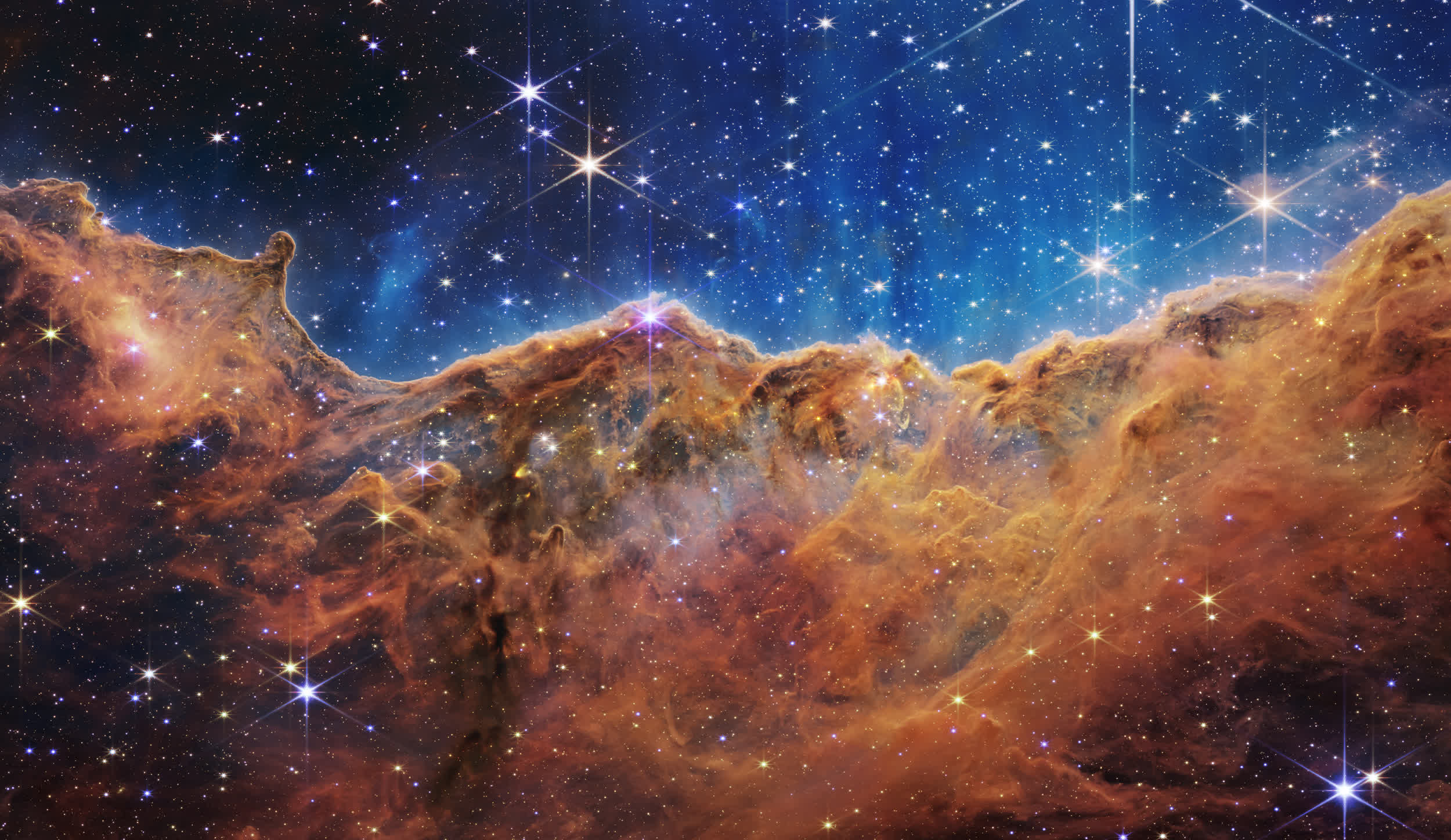
Last but certainly not least is this stunning image of the Carina Nebula, a cosmic nursery that was captured by Webb's NIRCam. This same section had previously been imaged by Hubble but lacked the level of detail that Webb is capable of. It's like going from SD resolution on a tube TV to 8K on the latest OLED.
The constellation Carina is roughly 7,600 light-years away and was first catalogued by James Dunlop way back in 1826. It is visible from the Southern Hemisphere, with this specific section located in the northwest corner of the Carina Nebula.
